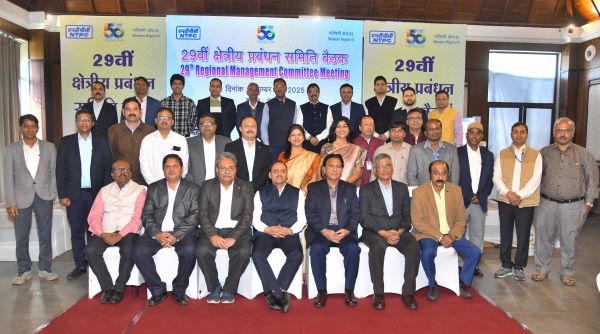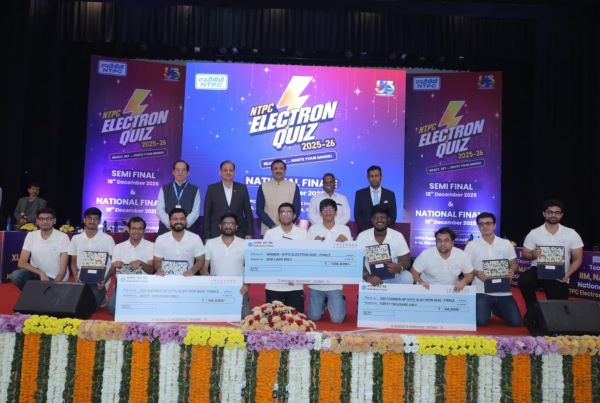
Team News Riveting
New Delhi, July 23
The Union Cabinet, chaired by the Prime Minister, Narendra Modi approved the Production Linked Incentive (PLI) Scheme for specialty steel.
FAQs in its regard may be seen below:
1. What is PLI Scheme for specialty steel?
PLI stands for “Production-Linked incentive”. The objective of PLI scheme for ‘speciality steel’ is to promote manufacturing of specialty steel grades within the country by providing financial incentives. Presently the country operates at the low end of value chain in steel manufacturing. The PLI incentive is expected to boost the domestic production of specialty steel by,
• attracting significant investment
• infusing technology and know-how
• promoting exports.
2. What is ‘specialty steel’?
‘Specialty steel’ is a downstream, value-added product of steel manufacturing process. However, there is no universal definition of ‘specialty steel’.
3. What is covered under speciality steel as per the PLI Scheme?
The scheme covering Specialty steel grades shall be applicable for the following five (05) indicative product categories:
i. Coated/Plated Steel Products
ii. High Strength/ Wear resistant Steel
iii. Specialty Rails
iiii. Alloy Steel Products and Steel wires
v. Electrical Steel
4. Why have these products been chosen?
The identified products have-
• High potential for domestic production, import substitution, exports and attracting significant investments.
• Demand of stakeholders
• Niche applications.
5. How were these products identified?
• Detailed consultations with the industry and inter-ministerial consultations were held before finalising the products.
6. What is the incentive outlay under the scheme?
The total outlay will be ₹6,322 crore.
7. What is the tenure of the scheme?
• Incentive under the scheme will be provided for a maximum period of five (5) years.
• The first incentive will be payable from 2023-24 based on the commercial production of 2022-23.
8. Can the scheme period be deferred?
• For some product categories, the initial year may be deferred by up to two years.
• In case of adverse circumstances, such as force majeure, companies may be allowed deferment of the initial year by one year with the approval of Empowered Group of Secretaries (EGoS).
9. Who can apply under the Scheme?
A company registered in India under the companies Act 2013, that is engaged in manufacturing of the identified “Specialty steel” grades, subject to the input material being melted and poured within the country using iron ore/scrap/sponge iron/pellets etc. shall be eligible to apply for incentive under the scheme. End to end manufacturing will thus take place within the country
10. How will the country be benefitted through the scheme?
| Baseline (2019-20) | Projected (2026-27) | In % | |||
| Volume | Value | Volume | Value | ||
| (Million tonnes) | (₹ Cr) | (Million tonnes) | (₹ Cr) | ||
| Production | 17.6 | 97,287 | 42.2 | 2,42,838 | 140% |
| Import | 3.7 | 29,256 | 0.9 | 7355 | -76% |
| Export | 1.6 | 9,474 | 5.5 | 33,024 | 244% |
• Projected production of the identified ‘specialty steel’ grades is expected to more than double by 2026-27. (Baseline production is 17 million tonnes, projected production is 42 million tonnes).
• Projected export (in volume) is expected to become more than 3 times the present volume.
• Projected import (in volume) is expected to reduce by 4 times.
• An expected investment of ₹39,625 crore by 2029-30 in ‘specialty steel’.
11. Who are the expected beneficiaries?
• Major Integrated steel players in the categories Coated/Plated products, High strength/wear resistant steel, and Electrical steel.
• Alloy steel manufacturers and secondary steel manufacturers in Alloy steel products and steel wires.
12. Will MSMEs benefit in the scheme?
• The scheme seeks to offer a level playing field to both the integrated steel manufacturing companies, downstream steel manufacturers including those in the MSME category.
• MSMEs which are into manufacturing the identified specialty steel grades are expected to participate in the category, “Alloy steel products and steel wires”.
13. What is the mode of applying under the PLI scheme?
A company may apply for availing benefits under the scheme through an online portal.
14. Can a company apply for multiple product category/ sub-category?
Yes, a company may apply for as many products category/sub-category as it desires. However, it needs to submit separate application for each product sub-category along with non-refundable application fee. The PLI is fund-limited, however, with a cap of ₹200 crore on an eligible company across all product categories.
15. What are the eligibility criteria under PLI Scheme?
The criteria are – threshold minimum incremental production and minimum investment.
16. Is an applicant having existing unit producing specified product in the scheme eligible for PLI scheme under that product sub-category?
• All applicants committing to the minimum thresholds of incremental production and investment are eligible.
• The scheme does not distinguish between greenfield and brownfield investments.
• The investment/production must be in addition to the existing facilities and cannibalisation of the existing product lines will not be acceptable.
17. What is threshold incremental production rate?
It is the incremental production rate for a given product sub-category and will be notified in the guidelines. Applicants are required to commit achieving either equal to or above threshold incremental production rate to be eligible for participation in PLI scheme.
18. What are permissible investments?
For each product category/sub-category, only investments in the “list of permissible investment” as may be notified in the guidelines are considered acceptable in the scheme.
19. How is incentive calculated under PLI scheme?
Incentive is calculated based on the incremental production which is multiplied by the incentive slab as applicable and the weighted average sales price of the product. For example,
A = Incremental sales in current year with reference to previous year or the base year whichever is higher
B = Weighted Average sale price (net of taxes) in current year
C = Weighted Average sales price (net of taxes) in the base year (2019-20)
Incentive = (A/B) x (B or C, whichever is lower) x (PLI rate as applicable)/100
*Current year means the year for which PLI has been claimed.
20. What if a selected company is not able to meet any of the threshold criteria for a given year?
If an applicant company is not able to meet threshold criteria, no incentive shall be payable to the company for that year, but full cumulative production must be made by the selected company in the following year.
21. What are the PLI slabs at which incentive will be payable?
| PLI Slab | 2022-23 | 2023-24 | 2024-25 | 2025-26 | 2026-27 |
| PLI – A | 4% | 5% | 5% | 4% | 3% |
| PLI – B | 8% | 9% | 10% | 9% | 7% |
| PLI – C | 12% | 15% | 15% | 13% | 11% |



